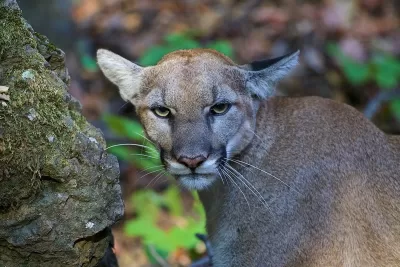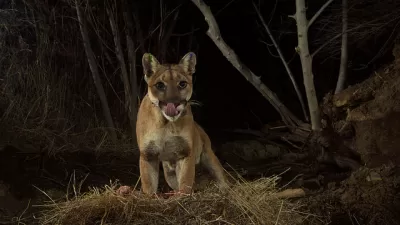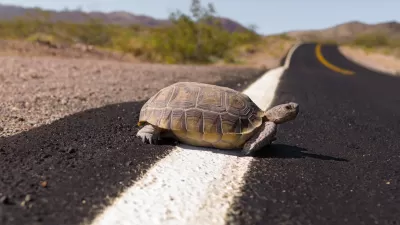A mountain lion was found dead on the 101 Freeway, less than half a mile from the steel and concrete endoskeleton of the Wallis Annenberg Wildlife Crossing.

On June 15, 2024, a mountain lion was struck and killed on the 101 Freeway in Agoura Hills, less than half a mile from the under-construction Wallis Annenberg Wildlife Crossing. This incident underscores the necessity of the wildlife bridge, set to be completed by early 2026, which aims to provide a safe passage for animals across the freeway, reducing wildlife fatalities and supporting genetic diversity for species in the Santa Monica Mountains. Local officials and wildlife advocates expressed both heartbreak over the recent death and relief that the wildlife crossing is becoming a reality, emphasizing its critical role in preventing further losses.
The California Highway Patrol reported the fatal accident early in the morning, with the deceased lion later identified as an uncollared adult male by the California Department of Fish and Wildlife. Genetic samples were collected to learn more about the lion's origins. This tragic event, along with previous similar incidents, highlights the ongoing dangers faced by wildlife in the area and reinforces the importance of the crossing, which is designed to benefit a range of species, from mountain lions to monarch butterflies.
Construction of the Wallis Annenberg Wildlife Crossing is progressing, with current efforts focused on building vegetated sound walls and preparing the bridge for soil and plant integration by the end of the year. The project, costing $92 million, will also extend over Agoura Road and include fire-safe utility relocations. Advocates hope the successful implementation of this crossing will inspire similar projects in other critical locations, addressing widespread wildlife movement challenges across busy roads.
FULL STORY: Cougar death near new wildlife bridge a heartbreaker

Planetizen Federal Action Tracker
A weekly monitor of how Trump’s orders and actions are impacting planners and planning in America.

DARTSpace Platform Streamlines Dallas TOD Application Process
The Dallas transit agency hopes a shorter permitting timeline will boost transit-oriented development around rail stations.

Four Reasons Urban Planners Can’t Ignore AI
It’s no longer a question of whether AI will shape planning, but how. That how is up to us.

Texas State Bills to Defund Dallas Transit Die
DART would have seen a 30% service cut, $230M annual losses had the bills survived.

Bikeshare for the Win: Team Pedals to London Cricket Match, Beats Rivals Stuck in Traffic
While their opponents sat in gridlock, England's national cricket team hopped Lime bikes, riding to a 3-0 victory.

Amtrak’s Borealis Exceeds First Year Ridership Expectations
205,800 passengers have boarded the St. Paul to Chicago line, well above initial MDOT projections.
Urban Design for Planners 1: Software Tools
This six-course series explores essential urban design concepts using open source software and equips planners with the tools they need to participate fully in the urban design process.
Planning for Universal Design
Learn the tools for implementing Universal Design in planning regulations.
City of Mt Shasta
City of Camden Redevelopment Agency
City of Astoria
Transportation Research & Education Center (TREC) at Portland State University
US High Speed Rail Association
City of Camden Redevelopment Agency
Municipality of Princeton (NJ)




























